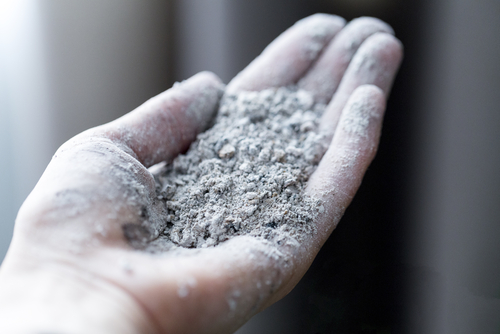Silica, often referred to as quartz, is a very common mineral. It is found in many materials common on construction and oil & gas sites, including soil, sand, concrete, masonry, rock, granite, and landscaping materials.

Silica, its a team-oriented environment where we collectively drive the company forward.' Robin Meister Vice President, Internal Audit. See Corporate Jobs. 2 of 4 'We have a great boss that shares all his knowledge with us and invests in us to become.
Momentum Textiles’ journey began with an ambitious goal – creating an environmental alternative to vinyl and polyurethane. Developed over the course of two years, our goal was accomplished by creating a new coated fabric made from 51% silicone and 49% Polyester; zero PVC and zero solvents. Silica is a naturally occurring material in minerals, flint and in some plants in crystalline phase. Silica commonly used in industries is in synthetic form. Surface area, pore volume, pore size and particle size are independently controllable to some extent. The crystalline silica may be classified based on atmospheric pressure as: a. Siliceous rock, any of a group of sedimentary rocks that consist largely or almost entirely of silicon dioxide (SiO2), either as quartz or as amorphous silica and cristobalite; included are rocks that have formed as chemical precipitates and excluded are those of detrital or fragmental origin.
The dust created by cutting, grinding, drilling or otherwise disturbing these materials can contain crystalline silica particles. These dust particles are very small. You cannot see them. This respirable silica dust causes lung disease and lung cancer. It only takes a very small amount of airborne silica dust to create a health hazard.
Recognizing that very small, respirable silica particles are hazardous, the Occupational Safety and Health Administration (OSHA) regulation 29 CFR 1926.1153 requires construction employers to keep worker exposures at or below a Permissible Exposure Level (PEL) of 50 µg/m3 or comply with Table 1 – Specified Exposure Control Methods When Working With Materials Containing Crystalline Silica of the silica standard (click here to learn more about the construction standard). OSHA regulation 29 CFR 1910.1053 requires employers covered by the general industry standard, including oil and gas, to keep worker exposure at or below a Permissible Exposure Level (PEL) of 50 µg/m3 (click here to learn more about the general industry standard).
To learn more about the hazard…
- Protecting Workers from Silica Hazards in the Workplace Video, OSHA
- “Crystalline Silica Primer,” U.S. Department of the Interior
- Silica Exposure(video), WorkSafe BC
Crystalline Silica Resource Page
OSHA's new crystalline silica rule was finalized March 24. It reduced the permissible exposure limit (PEL) to silica in half, from 100 µg (micrograms)/cu.m to 50 µg/cu.m. AFS is committed to assisting foundries in coming into, and maintaining compliance with these new regulations, in the most effective and economical manner.
Silica Handbook for Small and Medium-Sized Foundries
This comprehensive guide is an AFS Members only resource. The 200+ page document includes copies of the Respirable Crystalline Silica standard (regulation), a plain language description of the requirements including respiratory protection and medical surveillance requirements, and more than thirty (30) attachments of templates, fillable forms, spreadsheets to track lab analysis, case studies from foundries, lists of service providers such as Industrial Hygienists, non-silica media providers, and a template to develop your own Silica Exposure Control Plan. Check out the table of contents for a full list of available resources. This is a living document, being updated as we hear of your needs and obtain information from OSHA, so check back often for updates.
Webinars
- Silica Substitutes - What Will Work for Your Foundry?Feb. 28, 2018 – Panelists: Steve Gates, Jeff Morrell, Bill Johnston, and Jerry Thiel
- How to Select an Industrial Hygienist and What to Expect When They ComeMarch 29, 2018 – Presenter: Kay Rowntree
- Respiratory Protection and Medical Surveillance for SilicaApril 26, 2018 – Presenter: Kay Rowntree
- Control of Silica: Part 1- Exposure Control OptionsMay 30, 2018 – Bob Scholz
- Countdown to Compliance Under OSHA's Final Silica RuleJune 19, 2018 – Presenter: Bradford T. Hammock
- Control of Silica Exposures: Part 2- Defining Root Causes and Evaluating Options for Silica Exposure ControlJune 28, 2018 – Presenter: Bob Scholz
- Housekeeping & Silica Exposure Control PlansJuly 26, 2018 - Presenter: Eric Pylkas
- Silica Q&AAugust 30, 2018 - Presenters: Tom Slavin, Kay Rowntree, Bob Scholz, Eric Pylkas
Update on Respirable Silica - What You Should be Doing NowNov. 7, 2017 – Presenter: Tom Slavin
AFS Webinar on OSHA's Final Rule and Its Impact on MetalcastersApril 12, 2016 – Presenters: Tom Slavin and Stephanie Salmon
Signs
Timeline and Resource Links
OSHA Resources

Frequently Asked Question for General Industry (January 2019)- New!
AFS - Silica FAQs General Industry Summary (January 2019)- New!
OSHA Interim Enforcement Guidance for the Respirable Crystalline Silica in General Industry standard, 29 CFR 1910.1053– OSHA’s guidance to its compliance safety and health officers on what to look for when inspecting a foundry for RCS compliance, and explanations of what justifies a violation and citation
Vendors
Sampling
Detailed Information on the Rule
Silicate Minerals
Preliminary Economic Analysis and Initial Regulatory Flexibility Analysis (With Employment Analysis)
Silicate
Silica Control Resources
PPE Guide for Metalcasting Operations (Book)
Silica Benefits For Humans
For further information, email Stephanie Salmon, AFS Washington Office, or call 202-452-7135.
